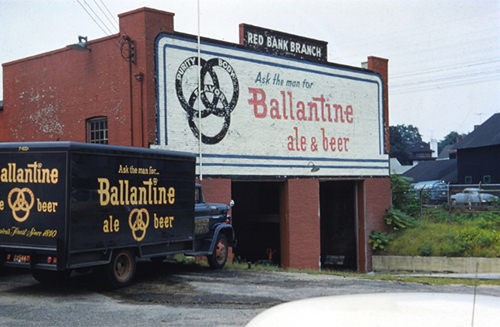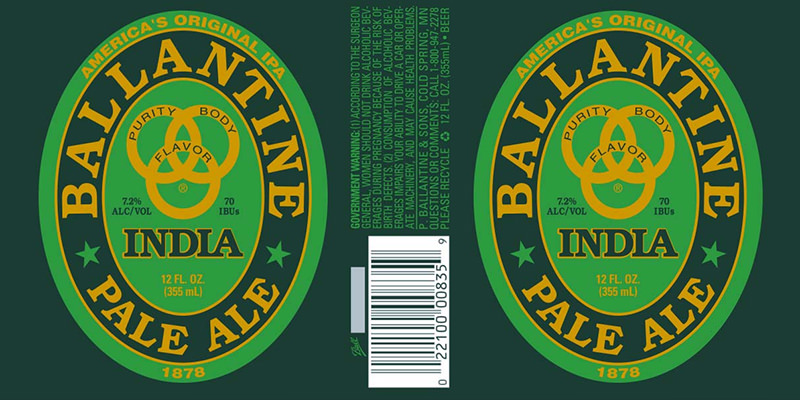You probably don’t remember Ballantine IPA, since the brewery shuttered in 1972, well before most of us were of legal drinking age. So news of its revival by Pabst might come with less of a viral shock than an innocuous thud. But the story’s worth looking into—and not just because it points to the weird future of “craft beer.” The beer itself (supposedly America’s first IPA) is unlike most anything you’ll find on the market today. Hop heads, especially, read on.
A bit of history. Ballantine—or P. Ballantine and Sons—opened its doors in Newark, New Jersey all the way back in 1840. Peter Ballantine was a Scottish immigrant, so the fact that he was determined to brew something different shouldn’t surprise: he brewed his IPA per the traditional “Burton” method of English IPAs—sharp hop flavor balanced by pale malt, the whole thing mellowed for a year in wooden casks (and this was well before the era of “bourbon-barrel-aged” everything).
For a brewery born before the Civil War, Ballantine made it through a lot, including Prohibition (they brewed malt syrup, and dabbled in real estate, never a bad idea). In fact, by the 1950s it was the third largest brewery in the country, trailing only Schlitz and Anheuser-Busch. So what happened? Tastes changed. IPAs gave way to two-dimensional lagers, and by the 1970s, Ballantine had lost its market. Falstaff Brewery picked up the remnants of Ballantine and then merged with Pabst in 1985. And while Pabst kept brewing Ballantine IPA, it was a pale iteration of the original—no hop oil, flatter flavors, just a duller beer (closer to what the market was used to at the time). By 1996, Ballantine IPA was nixed, lost, disappeared.

And now it’s back. The major question—in a market succored on a very different kind of hop-heavy IPAs—why? Because Pabst, who still owns Ballantine, wanted to get in on the fun (and money). As Pabst Brew Master Greg Deuhs told the Washington Post, when he was interviewing for his current position he was asked directly, “How could Pabst get into the craft beer market?’” His answer: Ballantine IPA.
But not the pale incarnation it devolved into. Deuhs had to search far and wide, to the point of actually asking people who were simply around when the IPA was at its prime. When he was finally ready, Deuhs did his best to make an approximation of the original’s Bullion hops (no longer grown much), which he achieved with a combination of hop varieties and hop oil. As for the barrel-aging, Deuhs added American oak spirals into the brewing process. The result: a very particular kind of IPA, back from the dead, nothing like the citrusy-pine bombs of the West Coast (though a bit closer to what you’ll find in many East Coast IPAs).
The question—does it give Pabst craft street cred? And how many more major breweries will follow suit? According to Time.com, Blue Moon was one of the earliest “pseudo craft” beers, hyping itself as craft when it was owned by a subsidiary of SABMiller. ShockTop is Anheuser-Busch InBev’s most notable in-house “craft” offering, though it’s also recently beefed up its craft credibility with purchase of Goose Island, Elysian, Golden Road, Blue Point, and 10 Barrel breweries. So that just leaves us wondering. The fact that Pabst is bringing back Ballantine is a good thing, but it also points to the looming question: how long before major breweries either buy up or co-opt all the craft beers out there? We’re exhaustively assured quality won’t diminish, but then the story of Ballantine proves that isn’t always the case. Bought up by Falstaff, and later Pabst, it’s IPA recipe bounced around, fell apart, and finally went extinct. Should we expect the same from Ballantine or can craft and macro beer companies actually, successfully hybridize?

